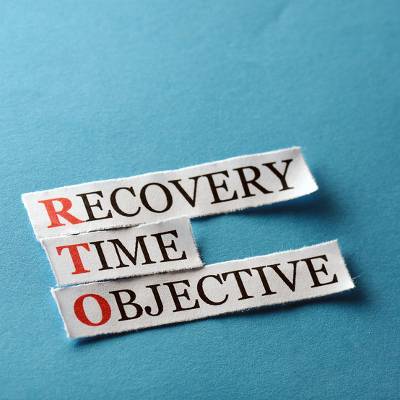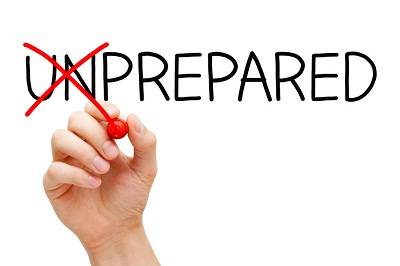Have any question?
Text or Call (954) 573-1300
Text or Call (954) 573-1300
For the modern business, ensuring that you have contingencies in place will go a long way toward keeping you in business if disaster strikes. One of the contingencies many businesses choose to make as part of a business continuity strategy is a disaster recovery plan. Disaster recovery is more than restoring data, it can mean mobilizing people and capital against time. Let’s take a look at two of the core components of a comprehensive disaster recovery strategy, Recovery Time Objective and Recovery Point Objective.
Businesses need to be extremely careful about how they protect their interests, but just in case something unfortunate happens, you want to have measures in place to guarantee that your future is secure. To this end, data backup and disaster recovery is critical. We’ll walk you through what you need to know about implementing data backup and disaster recovery, including the best way to make it happen.
Let’s face it; nobody wants to talk about disaster recovery, as even invoking these words makes the possibility a reality. Unfortunately, this is something that has to be discussed, as your business depends on it. This might seem like hyperbole, but if you knew what is at stake, you’d likely agree with us.
With data looked on as more of an asset than ever organizations are finding that their data backup and recovery system needs to be comprehensive. By knowing more about backup and recovery, you stand to be able to plan the solution to meet your company’s needs. Today, we will look at the different types of data backup and introduce you to four terms you need to understand.
It’s critical that you protect your business’ important assets, including perhaps the most important of all: its data. One of the best ways to do this is by implementing a solid backup solution. But what’s the best way to approach data backup? After all, every business is going to have different needs. We’re here to tell you all about these different needs, and how your organization can implement a reliable backup solution based on yours.
A recent surge of hurricanes, wildfires, earthquakes, and floods have crippled major cities and devastated entire regions all over the world. In the aftermath of these events, business owners are faced with a few glaring truths - one of which is the undeniable vulnerability of their business’ future in the event of a disaster. Most of the major news outlets are reporting this figure: according to the Federal Emergency Management Agency (FEMA), 40% of small businesses never recover from a disaster. Despite all the literature and precautionary tales surrounding these catastrophic events, there are still an overwhelming amount of businesses that choose not to prepare for a disaster until it's too late.
By now, you’ve probably heard about the importance of business continuity and disaster recovery planning for small businesses. According to FEMA, more businesses have business continuity plans than ever before. With so many SMBs looking to secure their future, there are still a few aspects of business continuity planning that today’s business need to comprehend. After all, there is more to it than just data backup. Disaster recovery is something that needs to be planned, practiced and updated.
Few organizations take business continuity planning as serious as financial organizations do. The Federal Reserve Bank (FRB) and Securities and Exchange Commission (SEC), as well as the organizations they oversee, depend heavily on technology for their daily operations. For these establishments, a severe data loss event or significant downtime has the potential to cripple the economy, depending on the severity. As such, they require all of the institutions that they have jurisdiction over to meet certain business continuity benchmarks.
No business owner wants to experience data loss in any way, shape or form, which is why it’s so crucial that preventive measures are taken. If you don’t have protections in place, you may find yourself out of business due to a data loss disaster. While that’s certainly the worst-case scenario, the other consequences of data loss are downright troublesome in their own right.
What would happen if you were in the middle of typing a report or performing some task, and the office suddenly lost power? Too many would find themselves staring blankly at an equally blank screen as their infrastructure suddenly ceased operations. However, there is a device that can help save you from the worst effects of sudden power loss.
 Preparing your business for disaster recovery is a difficult task, and certainly one that shouldn’t be taken lightly. There are so many variables that need to be taken into consideration before implementing a solid, fool-proof plan. Here are three questions you should ask yourself when considering the state of your current backup and disaster recovery solution, or preparing to implement a new one.
Preparing your business for disaster recovery is a difficult task, and certainly one that shouldn’t be taken lightly. There are so many variables that need to be taken into consideration before implementing a solid, fool-proof plan. Here are three questions you should ask yourself when considering the state of your current backup and disaster recovery solution, or preparing to implement a new one.
 Every business owner knows how important data backup is to their company's continuity plan, and they realize that a disaster recovery solution can help save them in the event of catastrophe. However, some businesses think they are the same thing, and they are sadly mistaken. While they are similar, a backup is not a disaster recovery solution.
Every business owner knows how important data backup is to their company's continuity plan, and they realize that a disaster recovery solution can help save them in the event of catastrophe. However, some businesses think they are the same thing, and they are sadly mistaken. While they are similar, a backup is not a disaster recovery solution.
 2015 isn’t the year to go without backups. If there’s anything 2014 showed the world, it’s that businesses can fall victim to data breaches when they least expect it. You want to be prepared in the event of a data breach or data loss, and the easiest way to do that is by taking advantage of an external backup. Unfortunately, even an essential solution like data backup can be forgotten amidst the everyday operations of the average business owner.
2015 isn’t the year to go without backups. If there’s anything 2014 showed the world, it’s that businesses can fall victim to data breaches when they least expect it. You want to be prepared in the event of a data breach or data loss, and the easiest way to do that is by taking advantage of an external backup. Unfortunately, even an essential solution like data backup can be forgotten amidst the everyday operations of the average business owner.
 Your mind is racing at a mile a minute, and you keep a to-do list for all of the things you are supposed to do. Unfortunately, that to-do list is often forgotten about. You save it as a .DOC text file on your computer, which has been making a strange clicking noise lately. But one day, the clicking sound gets worse, and worse, and worse, until your computer stops working completely. Just like that, all of your data is gone, and that's when it hits you.
Your mind is racing at a mile a minute, and you keep a to-do list for all of the things you are supposed to do. Unfortunately, that to-do list is often forgotten about. You save it as a .DOC text file on your computer, which has been making a strange clicking noise lately. But one day, the clicking sound gets worse, and worse, and worse, until your computer stops working completely. Just like that, all of your data is gone, and that's when it hits you.
 In a recent survey of small businesses, only 13% of respondents believed themselves to be susceptible to a disaster resulting in data loss. That means 87% of small businesses must be located in a fortress where they are protected from every natural disaster--yeah right! No business is immune from disaster; therefore, every company needs a disaster plan.
In a recent survey of small businesses, only 13% of respondents believed themselves to be susceptible to a disaster resulting in data loss. That means 87% of small businesses must be located in a fortress where they are protected from every natural disaster--yeah right! No business is immune from disaster; therefore, every company needs a disaster plan.
 One uncontrollable aspect in life is Mother Nature. There's no way you can stop a hurricane from ripping your roof off, but you can have an emergency plan in place for when/if it happens. People need to know what their responsibilities are and the action they need to take in those cases. How will your business continue operations in the event of a natural disaster?
One uncontrollable aspect in life is Mother Nature. There's no way you can stop a hurricane from ripping your roof off, but you can have an emergency plan in place for when/if it happens. People need to know what their responsibilities are and the action they need to take in those cases. How will your business continue operations in the event of a natural disaster?
Learn more about what L7 Solutions can do for your business.
L7 Solutions
7890 Peters Road Building G102,
Plantation, Florida 33324